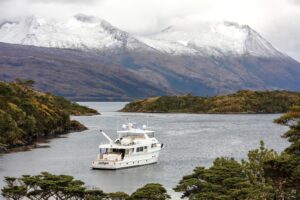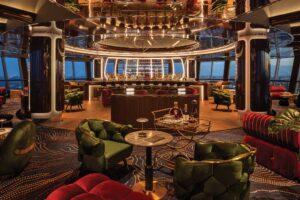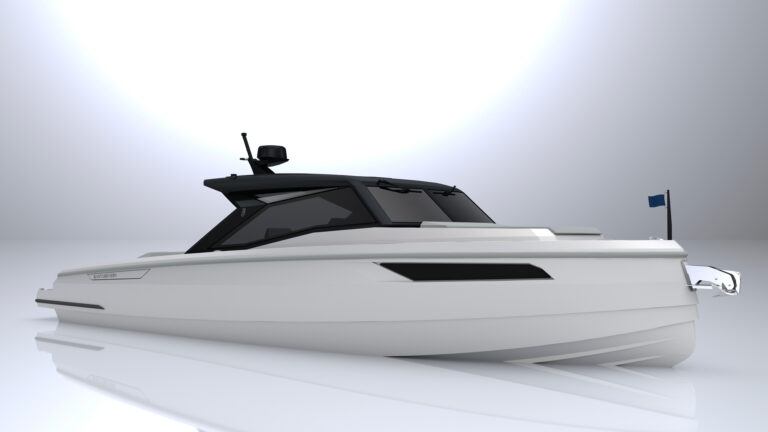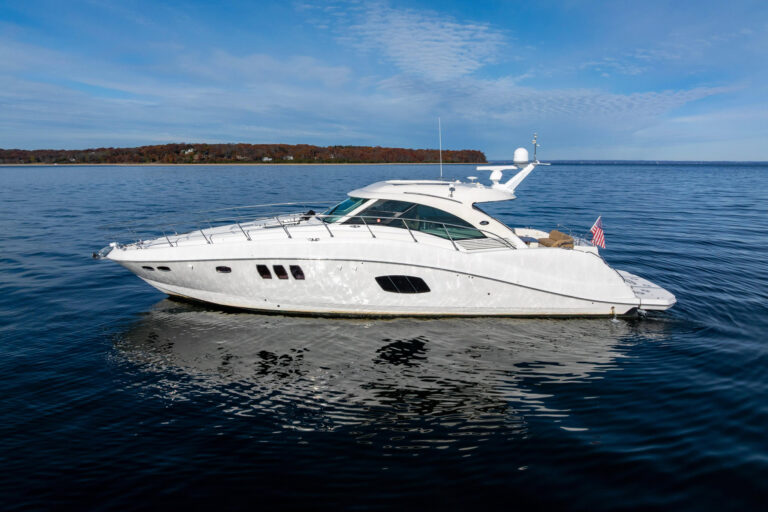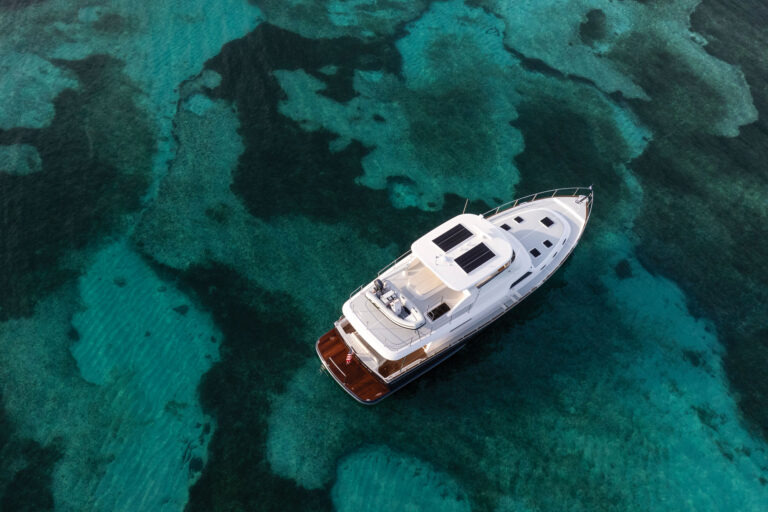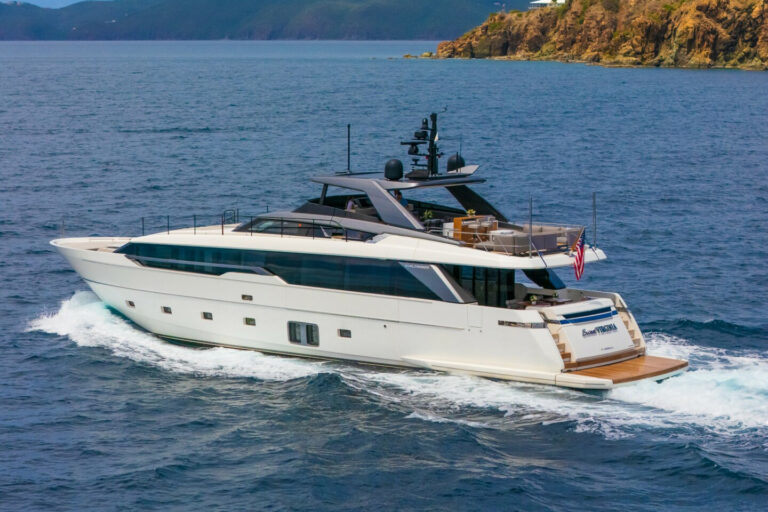
Pelagic Australis
For blog entries from this incredible journey click here.
It is mythical—the Everest of Sailing. Wedged between the Roaring Forties and the Screaming Sixties, Cape Horn’s Furious Fifties are the final resting place of hundreds of ships and thousands of souls. It is said to have the worst weather on the planet. YouTube has dozens of videos showing enormous waves, large ships getting battered, small boats burying their bows in green water. Of course, I couldn’t wait to go. So, it was the Cape Horn legend, in particular, that drew me—though I should have remembered that the truly sublime is always less touted.
Arriving in Ushuaia, Argentina, I felt like I had reached the end of the world. But that was before I boarded the tiniest plane I’ve ever seen, (in a life full of puddle jumper flights) with a prepubescent pilot, and flew about 30 miles, 500 feet above the Beagle Channel, to Puerto Williams, Chile. Those were 20 of the most beautiful minutes of my life and the perfect introduction to the journey I’d embarked upon. Snow-dusted mountains over either shoulder; beneath, the dark jade channel that must have looked exactly the same as when Fitzroy and Darwin charted it, nearly 200 years ago…As we approached Puerto Williams, the tiny airstrip’s borders lit up, emblazoned in twinkling greens and reds. A half-hour later, I stood on the dock that lead to the Yacht Club Micalvi—a listing, half-sunk, steel navy vessel…this, I realized, was the end of the world.
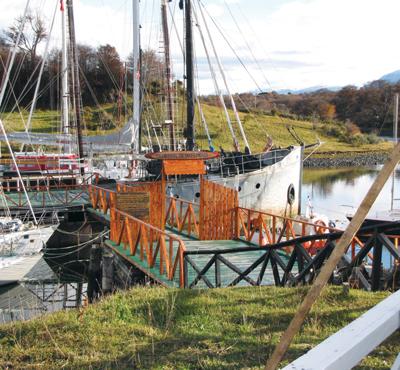
Pelagic Australis, a 74-foot aluminum sailboat and my home for the next month, was just tying up beside Victory, a 75-foot wooden schooner, which was rafted on the outside of Micalvi. Laura Parish and Miles Wise, the first mate and captain, respectively, who are also partners, sat in the pilothouse and drank a welcome aboard cup of tea with me. The boat was strangely quiet since most of the crew was still in the classroom—finishing up the final days of their RYA (Royal Yachting Association) Yachtmaster certification course. The plan, said Miles, as the pale, winter sun started its early descent, was to watch the weather forecasts and head up the Beagle Channel to do some exploration as soon as classes had finished. After that, we’d sail for Cape Horn, and from there, on to the Falklands, and across to Buenos Aires.
I dragged my seabags below, eager to get my gear stowed before my roommate returned. The cabin was comfortable enough, but not large. The bottom berth had already been staked out, but I had no trouble finding enough room for my stuff, and I liked that my berth, though narrower, had a small porthole. Laura gave me a tour of the rest of the boat, with specific instructions on how to pump out the heads and the shower trays, where to find provisions, etc. We finished up as darkness fell, and just as the troops returned, boisterously stamping their feet in the cold. This was a big moment: With an LOA of 74 feet and less than 20 feet of beam, 11 of us would be sharing this small, floating space for the next four weeks. When you think about it, it would be nearly impossible to share 1,480 square feet with 10 of your very favorite people for more than a day. Now imagine doing it with strangers for a month. Luckily, we had plenty of rum, beer, wine, and good food aboard—and we shared a common goal—so we didn’t stay strangers for long.
Pelagic Australis is a solid ship. Comfortable but not luxurious, she is purpose-built for cruising southern latitudes, and she tends to draw the kind of adventurous charterers who don’t mind rolling up their sleeves and doing some chopping, cooking, washing, and deck-swabbing. On our trip, which was the end-of-season delivery to Buenos Aires for lifeboat and other safety inspections, we were crew, so we also took turns at the helm, on deck, and navigating.

By the time we headed west up the Beagle Channel a few days after I arrived, there was a watch schedule in place that would regiment our lives for the next month. Every few days, we were assigned a team “mother-watch”—responsible for cleaning and getting three square meals on the table and keeping teacups and coffee mugs full. Once we were doing offshore passages, this offered a welcome reprieve from the standard watches of 6 hours on/6 hours off/4 hours on/4 hours off/ 4 hours on/ 4 hours off that became our daily routine. The watches weren’t difficult, but adjusting to the odd sleeping schedule took a while.
In the beginning, though, as we cruised the Beagle Channel, we anchored each evening, and after running double bow and stern lines ashore (because big winds could come up so unexpectedly) we enjoyed a delicious dinner, a great assortment of Argentinian and Chilean wines, and a full night’s sleep. We motored much of the way up the channel because of the light and unpredictable winds caused by towering mountains on either side, but oh—what a view!
I had just finished reading the excellent book Evolution’s Captain by Peter Nichols, which focuses on the relationship between Robert Fitzroy, the captain of the HMS Beagle, and Charles Darwin. So, my head was racing with images of Patagonia as it must have looked to them then. But I really hadn’t expected to see a region that seemed virtually unchanged since that time. This is surely one of the few parts of the world where nature still appears to have the upper hand over man.
We cruised past snowy Ushuaia, a frontier town (that has expanded rapidly in the last 20 years thanks to Antarctica tourism) spread at the base of the mountains, to Caletta Olla. Past Ventisqueros Francia, Italia, Romanche—a veritable United Nations of stunning blue glaciers that flowed down to the channel. In East Seno Pia, we hauled a large chunk of glacial ice onto the stern and hacked it into thousand-year-old diamonds of coldness as a treat in our cocktails that evening. The next day, we veered off course, crisscrossing the channel to watch an ancient food chain ritual as majestic Orcas feasted on unfortunate fur seals. One morning, we refilled our water tanks from a glacial waterfall before pulling up anchor, then retraced our route from the night before, circling in the basin at the base of Ventisquero Guilcher. Guilcher was perhaps the most majestic of all the glaciers, with a huge blue shelf of ice and mounds of wind and water scoured stone. When we had approached Guilcher the day before, catabatic winds had roared down the mountain and into the basin, churning the ice-filled water. Now the winds were light and we spent a few hours just circling at the base of Guilcher, mouths ajar…I gave the Pentax K-7 a punishing work out that morning!

We ended our Beagle Channel cruise with a trip to Bahia Yendegaia and Estancia Ferrari. We arrived in the dark, but on deck the next morning, the sky was the color of an old bruise. The hills were dusted in snow, the mountains behind them vanishing into ghostly flurries. The tide was out and sea birds strutted the wet strand, crying mournfully. A handful of small shacks dotted the beach at the foot of all this: Estancia Ferrari. Ashore, we mounted horses and followed José, a true gaucho, and his big pack of dogs, through a scene of almost unimaginable beauty. Fat, wet flakes cascaded down as we trotted through fields and fjorded tidal streams, mountains to either side, sea behind us, the only sounds the sucking of the horses hooves in mud, an occasional equine snort, or a human gasp of appreciation.
After a week, we returned to Puerto Williams to clear Chilean customs and wait out a three-day low-pressure system, then set off for Cape Horn. We sailed down the Channel, past the famous wreck of the ship Logos, Picton Island, Lennox Island, and into Bahia Nassau and the island group near Cape Horn. We arrived as night fell, and Miles did some truly impressive navigation as he threaded us through a tight and completely unmarked channel between two islands in the pitch black. Most of the charts of this region are still based on Fitzroy’s surveys and they don’t synch up with modern GPS. As a result, mud maps and handmade annotations conveying local knowledge are invaluable. (After Rudi, my navigation watch partner, and I had carefully entered East Seno Pia, a cove with a slightly tricky entrance from the Beagle Channel, we watched the chart plotter with a mixture of disbelief and relief as our GPS showed Pelagic Australis passing 100 yards behind our current position, and directly across a treacherous moraine!)
I woke at dawn on May 31, wildly excited. This was the day when we would finally round Cape Horn. The sunrise was spectacular and as we left the shelter of the islands, the seas began rolling in a long and high but gentle swell. The infamous Cape Horn continued to deliver nothing more than low gray skies and long swells throughout the morning, but none of us doubted our luck. A look around the high hills and rocky coasts dropping away behind us, the long view out across the Drake Passage, toward the coast of Antarctica, fewer than 400 miles away… the seas where the Atlantic and Pacific meet, and the South American landmass has completely abandoned its duty as a crucial windbreak. You could just feel the careless power of the sea, a moody tyrant caught in a rare good mood.

As that famous view came into focus on the horizon, a hush descended on the boat. It wasn’t abrupt or dramatic, but it was very real…each of us looking in awe at a long-sought goal and turning inward to reflect on what had brought us here. There is a very mournful quality to the place—it’s almost impossible to know the history and not see that massive headland as a kind of monolithic gravestone for all the sailors that never lived to tell the story. Here is where the sea took them. Cape Horn marks the spot.
And then, with the first tip of the bottle into the drink—giving Neptune, Poseidon, Cape Horn, and all those souls their due— we, the living, celebrated: We had sailed around Cape Horn.
Look for another feature on the second part of Mary South’s voyage aboard Pelagic Australis, through the Strait of Le Maire to the Falkland Islands and on to Buenos Aires, in a future issue.


